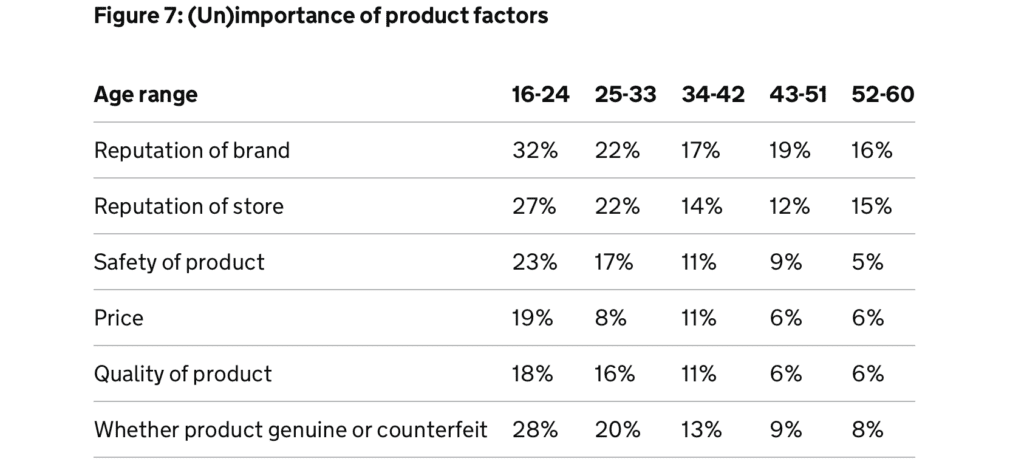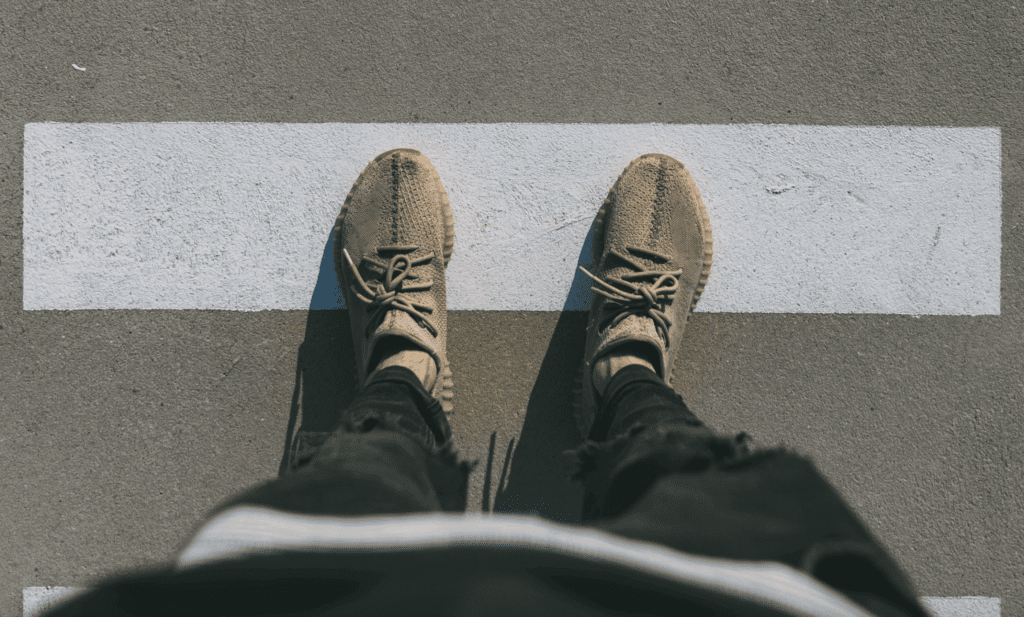Male consumers are emerging as a key category of consumers who are actively seeking out and knowingly purchasing counterfeits, according to a new report, and in many cases, influencers have a hand in promoting the copycat wares – or “dupes” – at play. In a newly-published report, the United Kingdom Intellectual Property Office (“UKIPO”) states that on the heels of surveying female consumers for a counterfeit-centric study in 2021, it conducted a similarly anonymous online survey of 1,000 UK-based men between ages 16 to 60 who use social media at least once per week. Based on the survey, the UKIPO found that “twice as many” men as women purchase counterfeit goods, with 35 percent of males knowingly purchasing a counterfeit in the year prior to the survey compared to 17 percent of women in the previous research.
Key findings: Among some of the UKIPO’s key findings were that of the men who purchased counterfeit goods during the survey period, 25 percent were aware that the products were counterfeit, whereas 6 percent say they were duped into buying counterfeit goods; of the men who said that they knowingly purchased counterfeit goods, 60 percent were between ages 16 to 33; and 36 percent of knowing buyers said that they are “habitual buyers.” (The UKIPO noted that the figure for men who knowingly purchased counterfeits (25%) was notably higher than women (10%).) Male consumers also sustain “a high level of counterfeit purchasing into their 30s,” the UKIPO found, meaning that “the decline in the attraction of counterfeits is delayed by 5 to 10 years compared to females.”
In terms of the categories of counterfeit products that were knowingly purchased by men, the UKIPO found that the top three were sports products and sportswear (14%), clothing and accessories (13%), and jewelry and watches (10%). In comparison, the top three categories for females are “heavily skewed” to clothing and accessories (10%), jewelry and watches (5%), beauty and hygiene (5%).

The role of influencers: Turning its attention to the role that influencers play in the promotion of counterfeit goods, the UKIPO asserted that the “main aim” of its research was to determine the extent to which influencers are successful in influencing male consumers’ decisions to purchase counterfeit goods. By way of some background, the UKIPO revealed that men are not immune to the general influence of social media influencers, and in fact, they are “more likely” to buy both genuine and counterfeit products because of a trusted social media influencer’s endorsement than if a product is not endorsed by an influencer.
In the context of counterfeits, the UKIPO maintained that males are actually “over twice as susceptible to” the influence of influencers than females – with 24 percent confirming that they have purchased counterfeits as a result of those goods being endorsed by social media influencers. (For a point of comparison, 31 percent of men said that they are generally “influenced by social media endorsements.”)
With regards to locating counterfeit goods, almost 12 percent of male respondents said that they encountered influencer-endorsed counterfeits after searching for authentic product listings, while almost 7 percent said that they “proactively search for counterfeit items, using [influencers’] social media posts to assist in their searches.” And as for their motivations for purchasing counterfeit goods beyond just the backing of an influencer, the UKIPO discerned that about 40 percent of survey participants said they approve of rationalizations that justify buying counterfeits (42% of males, for example, believe “the trade in counterfeits is the manufacturers’ fault for overpricing high brand products”), 23 percent believe counterfeits are not a health and safety threat; and 19 percent believe counterfeits do not harm businesses and jobs.
At the same time, the UKIPO discerned that in making their purchasing decisions, “males place more importance in the opinion of others, notably influencers” and are more likely to rationalize the purchases; they are “more dismissive of product factors that legitimate companies view as essential to their businesses,” such as the quality and safety of a particular product.

What it all means: The UKIPO says that the results of its newest survey support its previous research into the impact of influencers on consumers in finding that influencers have “a profound impact” on the purchasing intentions of some consumers, and namely, that endorsements of trusted influencers “stimulate demand for both legitimate and counterfeit products.”
Another critical takeaway courtesy of the UKIPO is that the present research suggests that “the lack of clarity and confusion around the term ‘counterfeit’ has a significant influence on purchasing behavior” of consumers and is associated with “substantially increased counterfeit purchasing.” Specifically, the rise and widespread use of language, such as “dupes” and “reps” (which TFL previously covered here), as opposed to “counterfeit, enables consumers to “manipulate the definition of deviant behavior to suit their objectives even though they know the behavior is wrong.”
The impact is of the practice is particularly “profound” among young consumers, according to the UKIPO, which found that 51 percent of males aged 16-24 years old “equate legitimate products with ‘counterfeit’” and that 71 percent of them purchase endorsed counterfeits. This “definitional uncertainty is readily exploited by influencers to overcome the residual reluctance of some consumers” to buy counterfeit goods.
Takeaways for brands: The UKIPO states that regulators and brand owners “should engage with social media platforms, online marketplaces, and especially the influencer marketing industry to tackle deviant influencers and disrupt the purchasing pathways.” This would also serve to identify “any gaps in the regulatory framework that may need to be addressed in order to make the companies accountable for facilitating influencers who advertise counterfeits.” Moreover, as part of an ongoing risk assessment strategy, brand owners should “canvas platforms and online marketplaces to identify complicit influencers and institute strategies” – such as litigation in some cases – “to mitigate the risks they pose.”














